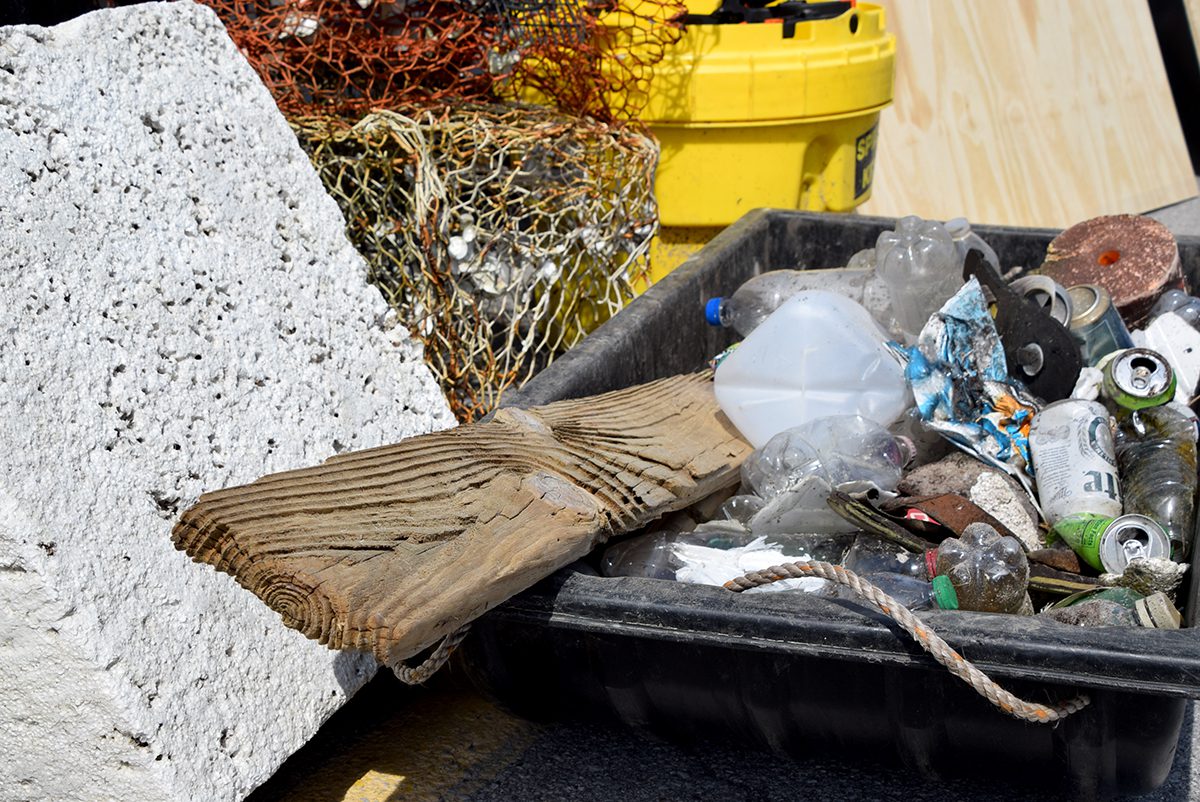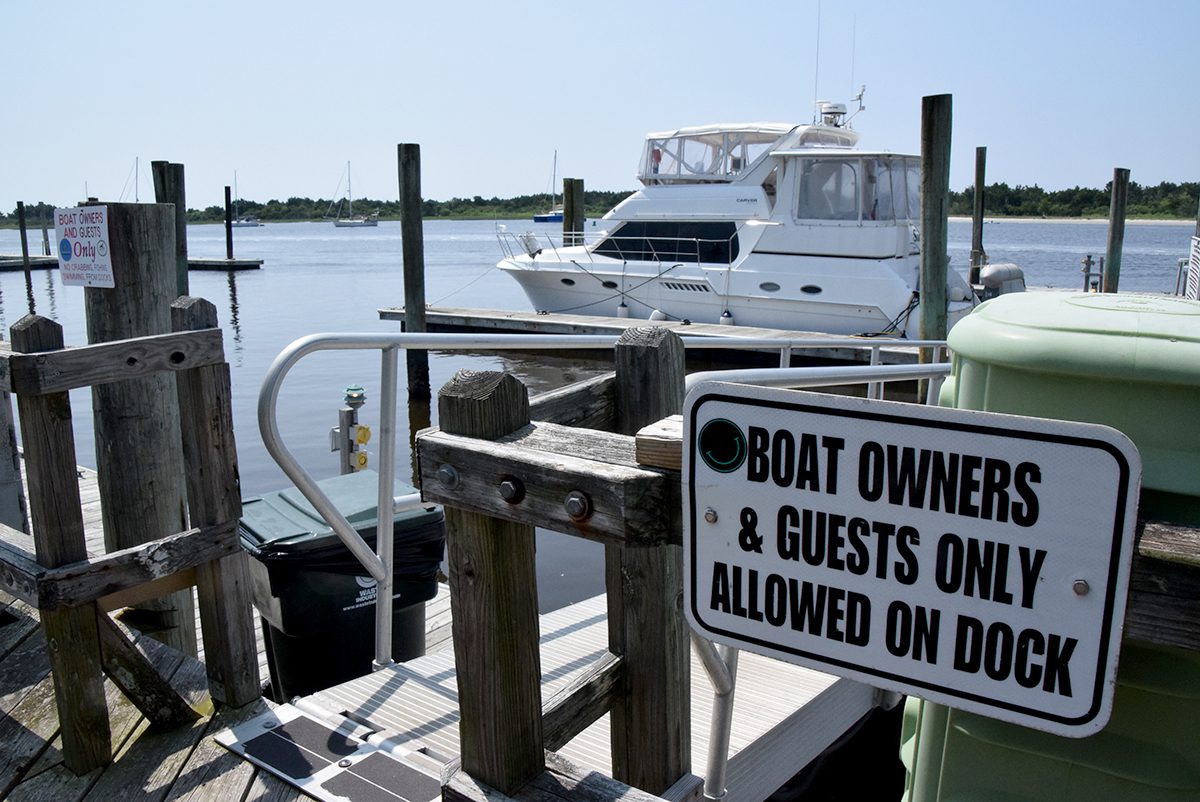
Five years after developing and acting on a collaborative approach to preventing and removing marine debris along the coast, those behind the plan met last week to review accomplishments so far and discuss ways to expand the message over the coming five years.
The roughly 20 representatives of state and federal agencies, nonprofit and community organizations, and academia with ties to the 2020-24 North Carolina Marine Debris Action Plan spent last Tuesday in the National Oceanic and Atmospheric Administration’s Beaufort facility discussing the plan’s background, completed actions, the results from a recent survey and reviewing goals for 2025-29.
Supporter Spotlight
The plan is a multiyear collaborative effort of the North Carolina Coastal Federation, North Carolina Coastal Reserve & National Estuarine Research Reserve, North Carolina Sea Grant, North Carolina Marine Debris Symposium and Coastal Carolina Riverwatch.
Marine debris is a persistent and widespread problem. The human-made products like plastics, metals, rubber, paper, textiles, abandoned fishing gear, and other lost or discarded items littering waterways can negatively impact human and wildlife health.
The Coastal Federation initiated the work in January 2017 when it brought together a leadership team to assess marine debris and debris management along the coast. Between that first meeting and when the plan was released in January 2020, the team met several times, held surveys, and established strategies and actions.
Coastal Federation Executive Director Braxton Davis told the participants Tuesday that the nonprofit had been engaged in marine debris projects for over a decade.
“I think everyone, early on, recognized that this is a thorny, complex issue, and it’s of a pretty significant magnitude,” Davis said.
Supporter Spotlight
The Coastal Federation, which published Coastal Review, has been working to protect the coast since 1982 and has offices in Wanchese, Newport and Wrightsville Beach.
Understanding that the work cannot be done alone, the Coastal Federation looked at similar efforts by other states and regions, and brought together groups and organizations to develop a marine debris action plan, Davis explained.
With marine debris always being present and the origins being difficult to trace, the organization is considering additional research to tailor policies and programs around efforts that will lead to prevention.
“I think that’s going to take significant collaboration with stakeholders, and it’s going to require some multifaceted solutions,” Davis said. Adding the workshop “is just one stepping stone on the path over the next five years.”
Coastal Federation Education and Outreach Director Sara Hallas said that the nonprofit really became invested in marine debris management in 2014 upon launching its lost fishing gear recovery project. Commercial fishermen are hired to find and retrieve lost crab pots from the state’s waterways early each year, “And we would always plan a volunteer cleanup along with that, to build awareness and engage the community,” Hallas said.
“And then we started looking around and realizing, surely, we’re not the only the organization doing marine debris projects, and surely, we’re not the only ones that are going to be able to clean up all of this marine debris. So how can we be a little bit more comprehensive and a little bit more strategic in our approach to make sure that we’re meeting all the needs of the coast?” she said.
This spurred the first meeting with other organizations involved in marine debris, and the work began, leading to “the first ever action plan for North Carolina in 2020,” Hallas said.
The first statewide plan to address marine debris outlined five major goals, including engaging the public with education, prevention and removal of marine debris and abandoned and derelict vessels, and encouraging research to understand marine debris and its impacts.
While 2020 had its challenges with the COVID-19 pandemic, Hallas said the team was able to continue with the action plan and reached nearly all of its individual action goals.
The current plan detailed 86 individual actions to be taken. Of those, 77.9% have been completed, 11.6% are in progress, and another 4.7% are ongoing, leaving about 5.8% of those items that have not been started as of mid-September.
“Only about five or six items of those 86 actions that we have in our action plan,” Hallas said, adding that for each year of the action plan, the leadership team has released a report that summarizes the highlights and takeaways from each of the major goals.
Working toward prevention, partners have reached more than 27,000 students and 33,000 adults with various education programs, participated in the North Carolina marine debris symposium each year, created marine debris curriculums, and rolled out the Marine Debris Free NC social media campaign.
In terms of removing marine debris, more than 9,000 crab pots have been pulled from waterways, as well as more than 3 million pounds of debris from coastal shorelines, “all just in the past five years,” Hallas said.
Preventing and removing abandoned and derelict vessels is its own category in the plan and has been a hurdle, she said.
“At the launch of the action plan, we saw some of the largest vessel removal in North Carolina history. And since then, that number has continued to grow,” Hallas said.
Since 2019, 343 vessels have been removed, and “a lot of that is thanks to bringing these groups” and resources together to solve the problem. The North Carolina Wildlife Resources Commission helps to maintain the database, and working with these organizations to allocate funding accordingly.
To understand the source of debris, research and assessment has been an important part of this work as well, Hallas said, “so that we’re not just in this endless cycle of cleanup.” One project by North Carolina Sea Grant and N.C. State University was to study the macro- and microplastics coming through the Neuse River into the Pamlico Sound. The team is also looking to increase the marine debris data by encouraging volunteers to log what they pick up in trash collection phone apps.
“But if you can take a second to imagine, if people and wildlife of coastal North Carolina never encountered a marine debris, what would that be like? And that was our initial goal for the action plan,” Hallas said. “How can we achieve to get to this vision?”
N.C. Coastal Reserve and National Estuarine Research Reserve Central Sites Manager Paula Gillikin explained that the team distributed a survey on marine debris in North Carolina in 2017 and again in 2024, with the same questions. The first survey had 111 respond and the latest saw 49 responses.
One question, Gillikin said, was to ask respondents to rank the goals of the action plan from most important to least important.
“‘Prevent’ came up as most important, followed closely by ‘Remove,” and then “Abandoned and Derelict Vessels’ came out third, and then ‘Research’ came out last,” Gillikin said, acknowledging that research often is ranked a low priority.
Possible actions the group discussed for the next five years include reaching underserved communities and incorporating environmental justice into all goals, working with government entities to improve public policy that prevents marine debris as well as managing abandoned vessels, and different ways to expand educating the public on marine debris.







